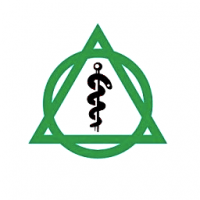Recommended specialists
Article overview
Pediatric neurosurgery - Further information
Main treatment emphases in neurosurgery in children
The main treatment emphases in pediatric neurosurgery are on the diagnosis and treatment of disorders and injuries of the brain, the central and peripheral nervous systems and the nerve sheaths and spinal cord.
The neurosurgical disorders in children requiring treatment include:
- childhood hydrocephalus (water in the brain, i.e. an accumulation of fluid in the cranium)
- fissure formation or malformations of the brain
- spina bifida (fissure formation in the spinal column, malformation of the neural canal, also known as 'open spine')
- spina bifida occulta (malformations of the spine not detectable by means of imaging, e.g. incomplete closure of the rear vertebral arches without clinical significance to complex malformations in the region of the spinal cord)
- craniosynostosis (premature closure of the cranial suture)
- malformations in brain and spinal cord vessels
- tumors in the brain or spinal cord
Diagnostic techniques in neurosurgery for children
Precise diagnosis is essential for the optimum treatment of children with neurosurgical disorders.
Working in close collaboration, neurosurgeons carry out their diagnoses together with pediatric radiologists and - depending on the type of disorder - with other specialists, using the most up-to-date techniques.
Besides
- endocrinological
- microbiological
- virological
- histological
diagnostics and human genetic consultations and examinations (e.g. including ante-natal diagnostics) numerous imaging procedures are also available:
- radiography (conventional X-ray)
- ultrasound
- angiography (X-ray techniques to examine arteries and veins with the aid of contrast media)
- CT (computed tomography)
- MRT, functional MRT (magnetic resonance tomography)
- MRA (magnetic resonance angiography)
- neurophysiological diagnostic techniques (e.g. EEG)
Treatment options for neurosurgical disorders in children
In the main, surgical treatments entail the use of minimally invasive endoscopic techniques.
Interventions in the case of vessel deformities, malformations or tumors are carried out by means of microsurgery. Operating theaters in the specialist clinics have ultra-modern equipment.
Treatments can be carried out with
- microscope systems supported by fluorescence and infrared
- special pediatric endoscopes
- intra-operative high-end ultrasound (ultrasound during the surgical intervention)
- ultra-modern neuronavigation
- intra-operative neuromonitoring (neuromonitoring during the intervention)
at a very high level.
The aim of minimally invasive interventions is treatment of the little patients which is both as gentle as possible but also effective.
The conservative or surgical treatment comes hand in hand with seamless aftercare, which is delivered in general in collaboration with the attached pediatric clinic and other specialist doctors.
Neurosurgeons for children - what training do they need?
In fact, there is no such role as a 'specialist pediatric neurosurgeon'. Doctors working in pediatric neurosurgery are neurosurgeons who, over a period of many years, have generally specialized in the treatment of babies, children and adolescents and their special disorder patterns in the field of neurosurgery.
To be able to work as a neurosurgery specialist, the initial starting point is the completion of medical studies.
These medical studies are followed by a further period of training lasting 72 months, leading ultimately to the status of qualified specialist. This covers the following practical activities:
- work in the ward care of patients for 48 months
- work in intensive medicine for six months
- work in the specialist surgery field and/or neurosurgery and neuroradiology or neuropathology for twelve months
- completion of work in the field of anesthesia, oral and maxillofacial medicine, ENT, anatomy, ophthalmology or pediatric or adolescent medicine for six months
For doctors wishing to work in pediatric neurosurgery, the natural recommendation is to choose the field of pediatric and adolescent medicine. In this way, doctors can also learn the special techniques of working with children.
During the junior doctor period, prospective neurosurgeons acquire the following knowledge, which they can of course apply in the treatment of babies, children and adolescents:
- recognition of neurosurgical disorders
- conservative and surgical treatment and aftercare and rehabilitation in connection with neurosurgical disorders
- recognition, treatment and aftercare of neuro-oncological disorders
- palliative medical care of patients
- post-operative reviews
- recognition of psychogenic symptoms
- recognition and treatment of pain syndromes
Work with children and their parents also requires delicacy of feeling towards patients and empathy in relation to the worries and anxieties of parents.











